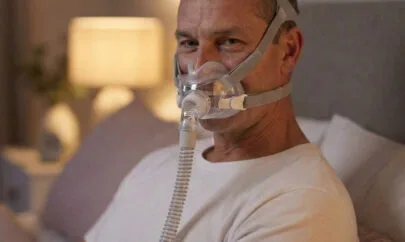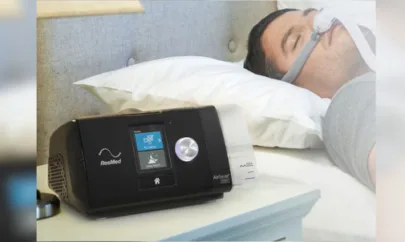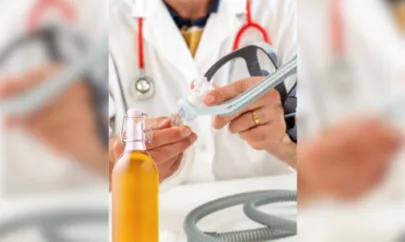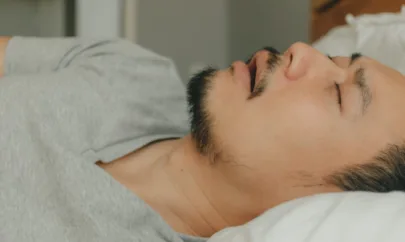
Overcoming Aerophagia: Tips to Prevent Swallowing Air With Your PAP Device
Someone with sleep apnea can awake multiple times every hour as the brain prompts the body to wake for air. Left untreated, this sleep disorder increases the risk of serious health issues including heart disease, stroke and diabetes.
A positive airway pressure (PAP) device prevents the collapse of the upper airways from OSA – and prevents a drop in oxygen levels. However, there are potential side effects. One of these is aerophagia.
What Is Aerophagia?
Aerophagia is the term for swallowing air. It is perfectly normal to swallow air as part of your daily life. You will swallow air when you eat or drink, and the air can enter your gastrointestinal tract. Smoking, chewing gum and stress can also result in swallowing air.
The common effects of swallowing air include:
- Bloating
- Belching
- Flatulence
- Heartburn
- Stomachache
- Feeling uncomfortably full
For most people, these symptoms will be mild and quickly pass. However, with excessive air swallowing, the air can continue to build up in the gastrointestinal tract. This can result in considerable discomfort and more exaggerated symptoms.
How Positive Airway Pressure Therapy May Increase Aerophagia
A build-up of PAP-related gas can be a side effect of the treatment. As the pressurized air is delivered into the airways, excess air can get pushed down into the esophagus which can cause the stomach to fill with gas.
If you use a PAP device, you will be more prone to swallowing air than usual. Indeed, it is believed that 16% of those using a PAP device report experiences with aerophagia.
The esophagus relaxes when you sleep and any excess air pushed down the airways can find it easier to enter the stomach.
Other reasons why with PAP swallowing air can increase:
- Pressure settings on the device. Set too high, and you have excess air forced into the esophagus. Set too low, and there is insufficient air pressure to deal with your sleep apnea, causing you to gulp more air to cope.
- You are a mouth breather using a nasal mask. This results in air escaping through the mouth instead of reaching the lungs. In reacting to this, you may begin to gulp down more air which is forced into the esophagus.
- Allergies or a cold that results in nasal congestion can result in gulping air through the mouth since the nose is blocked.
- Exhaling against a constant high-pressure air setting can be hard work. This can induce anxiety, particularly if you begin to feel like you are choking. This can cause you to hyperventilate and gulp excess air through the mouth.
Tips To Reduce Your CPAP Swallowing Air
Excessive swallowing of air is a side-effect that most people won’t experience. Even those who do may find that any discomfort from bloating or flatulence is relatively mild and gone within an hour in the morning.
However, if you continue to experience the symptoms of excessive air swallowing, it is important to consult with your doctor.
Obstructive sleep apnea is a treatable disorder where the symptoms including frequent night-time awakenings, snoring and daytime fatigue can be significantly reduced or eliminated. This also reduces the risk of developing health problems linked to sleep apnea.
The discomfort caused by swallowing air can result in people quitting their PAP therapy. Their OSA symptoms return, resulting in disrupted sleep again and increasing the risk of the health problems.
The following are solutions your doctor may suggest if you are experiencing PAP-related aerophagia.
Check Device Pressure Setting
Talk with your doctor to confirm that your device has the correct pressure settings. We all make mistakes, so this is a worthwhile check. Pressure settings that are either too high or too low can lead to excessive swallowing of air.
However, do not try to adjust the settings yourself. Always consult with your doctor. The pressure settings are calculated to be at a level to prevent your airways from collapsing. If the pressure settings are lowered too much it could negate the effectiveness of the treatment.
Change Mask
Finding the right mask is important. Some evidence suggests nasal masks may reduce air swallowing. However, if you breathe through the mouth, a full-face mask may work better than a nasal mask or a nasal pillow mask.
Ensure you know how to fit and wear the mask properly. Without a proper seal, you may not be receiving the air you need. Pressure sores are a sign that your mask is not the right fit or is leaking air.
Rethink Your Sleep Position
People with sleep apnea are often encouraged to sleep on their side to counter the gravitational pull on the throat tissues. This may also reduce the amount of air you swallow as you sleep. You could also prop up your pillows to sleep at an angle of around 30 degrees. This can make it harder for air to flow directly into the esophagus and stomach.
Try Another PAP Device
Whereas CPAP (continuous pressure air pressure) device supplies a constant air pressure, a Bi-Level PAP (BIPAP) device has a reduced pressure setting on exhalation. This can result in less air being pumped into the esophagus. An APAP (auto PAP) device automatically adjusts the pressure settings according to your breathing patterns and a small study found using APAP could see less air swallowed than using CPAP.
Over-the-Counter Medication
There are over-the-counter medications aimed at relieving gas-related symptoms. Although not conclusively proven to be effective, you could talk to your doctor about whether they may work for you.
Aerophagia can be uncomfortable and may affect your compliance with PAP therapy. It is key to consult your doctor to find out the causes of your discomfort. Compliance with your sleep apnea treatment is crucial and therefore eliminating any issues that may cause you to stop using your device is equally important.
Sources:
https://www.sleepapnea.org/cpap/aerophagia/
https://www.cpap.com/blog/swallowing-air-with-cpap-aerophagia/
https://www.verywellhealth.com/the-causes-and-treatment-of-cpap-gas-3015008








